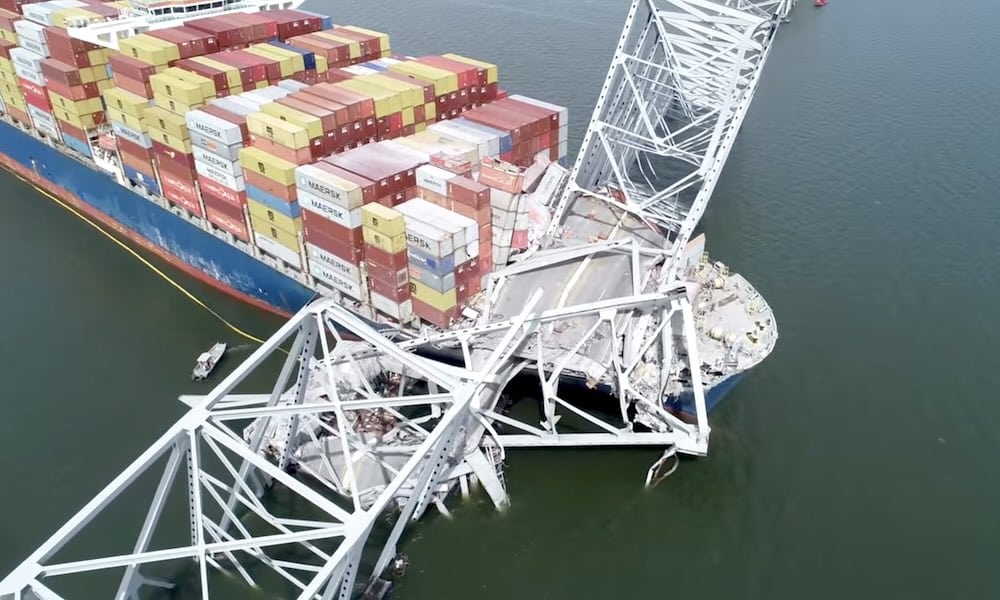HD Hyundai sued over alleged defective switchboard on the Dali
Legal Battle Intensifies Over Dali Shipwreck

The fallout from the tragic March 26, 2024, collision of the containership Dali with the Francis Scott Key Bridge continues as the vessel’s owner and manager escalate their legal fight. Grace Ocean and Synergy Marine have filed a product liability lawsuit against South Korea’s HD Hyundai Heavy Industries, claiming that design flaws in the ship’s critical switchboard led to the electrical failure that precipitated the disaster. This incident not only resulted in the bridge’s collapse but also claimed the lives of six construction workers and halted port traffic.
Claims of Electrical Defects and Historical Issues
In their lawsuit filed on July 31 in the US District Court for the Eastern District of Pennsylvania, Grace Ocean and Synergy Marine allege that the switchboard aboard the Dali was defectively designed and installed. Their complaint emphasizes a specific flaw in the under-voltage release (UVR) control circuit. According to the plaintiffs, a control signal wire was inadequately seated in its terminal block due to improper design. This defect, described as a labeling band placed too close to the ferrule, resulted in an open circuit that ultimately deprived the UVR coil of control voltage. The plaintiffs argue that this malfunction triggered a blackout, leaving the vessel without propulsion or steering as it approached the bridge.
Investigators from the National Transportation Safety Board (NTSB) and the US Coast Guard quickly identified the vessel’s electrical system as critical to the sequence of failures leading to the accident. A June 2024 update from the NTSB confirmed an interruption in the control circuit linked to the main breakers, corroborated by findings that revealed a loosely connected cable. Engineers from HD Hyundai reportedly acknowledged that such a condition could create an open circuit, which was later replicated in controlled tests, reinforcing the plaintiffs’ claims.
The Dali had a documented history of electrical issues. The NTSB’s preliminary report noted previous blackouts, including one while docked the day before its departure from Baltimore. This history raises serious concerns about the vessel’s maintenance and overall seaworthiness, issues that have surfaced in multiple lawsuits and governmental claims. Compounding the legal ramifications, federal prosecutors from the US Department of Justice filed a $100 million lawsuit against Grace Ocean and Synergy in September 2024, accusing them of operating an unseaworthy vessel and failing to report known mechanical issues.
Ongoing Legal Complications and Future Implications
In addition to federal scrutiny, Maryland state authorities have also filed a lawsuit against the ship’s owners and managers. They are seeking damages related to the bridge collapse, cleanup efforts, and reconstruction costs, claiming negligence in maintaining the vessel and addressing recurring defects. In response to these mounting legal challenges, Grace Ocean and Synergy Marine are pursuing a limitation-of-liability strategy. This approach aims to cap their financial exposure while shifting some responsibility onto state actors and the shipbuilder, HD Hyundai, which has been served and is expected to respond to the allegations.
The evolving legal landscape surrounding the Dali incident underscores the complexities of maritime law and accountability in the wake of such catastrophic events. As the litigation continues, the ramifications for all parties involved, including potential changes to regulations and safety protocols in maritime operations, remain to be seen.
